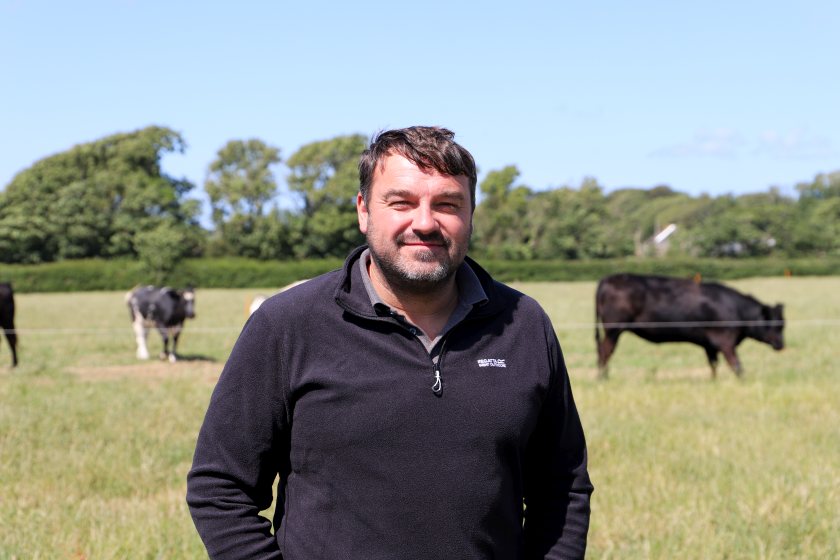
A Welsh beef farm is participating in a project which will see it make changes to calf rearing management to improve its future sustainability.
The Jones’ family have around 300 beef cattle, ideally sourcing calves from local dairy farms at around 10 days old.
These are reared in groups of 12 in separate pens in a converted machinery shed at Graianfryn Farm, the family’s 121-hectare beef and sheep farm near Holyhead, Anglesey.
During the grazing period they are turned out to grass at around two weeks post-weaning on a rotational grazing system.
Gerallt, who farms with his wife, says calf health and performance is key to the profitability in their business and to their ambition to reduce antibiotic use.
In a bid to achieve this and improve overall efficiency, the Jones' are working with Farming Connect on an Our Farms focus farm project.
The project is utilising technology as an aid to maintaining health, with calves fitted with reusable tags that collect and monitor their movement and temperature.
Humidity and temperature sensors are being used to monitor the environment in each pen to aid with management decisions.
Other changes, guided by vet Dyfrig Williams of Wern Vets, include establishing straw bale shelters in pens to provide protection from wind and colder temperatures.
Environmental enrichment toys have also been introduced, including balls and another in the shape of a star that is shown to discourage practices such as navel sucking.
Different measures have been introduced in each pen, and one pen, where there have been no alterations, will act as a control.
The business sells cattle to Morrisons or Kepak at 17-24 months, depending on the breed and their rate of growth, targeting a deadweight of 300-330kg.
Around 20ha of barley is grown as feed for the cattle and red clover leys are being established this year to produce high in protein silage.
“We won’t need to buy in protein for the TMR next year," Gerallt anticipates.
Finishing times are key to the efficiency of the system – the quicker an animal can be finished the lower the cost, and its carbon efficiency, he says.
Reducing the amount of antibiotics used is a key ambition too. “If an animal is healthy, it won’t need antibiotics, our ambition is to stop using them altogether," says Gerallt.
“It’s a long road, but with the project we are taking steps in the right direction."
